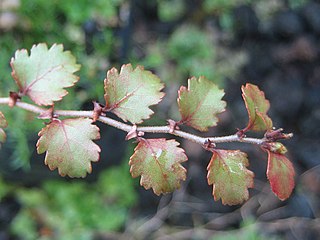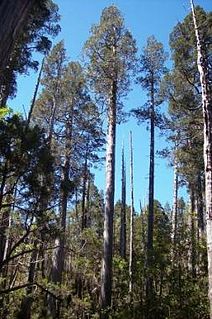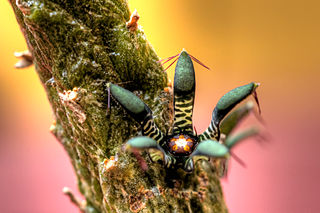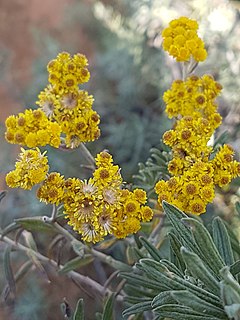
The flowering plants, also known as Angiospermae, or Magnoliophyta, are the most diverse group of land plants, with 64 orders, 416 families, approximately 13,000 known genera and 300,000 known species. Like gymnosperms, angiosperms are seed-producing plants. They are distinguished from gymnosperms by characteristics including flowers, endosperm within the seeds, and the production of fruits that contain the seeds. Etymologically, angiosperm means a plant that produces seeds within an enclosure; in other words, a fruiting plant. The term comes from the Greek words angeion and sperma ("seed").

The Orchidaceae are a diverse and widespread family of flowering plants, with blooms that are often colourful and fragrant, commonly known as the orchid family.

The Nearctic is one of the eight biogeographic realms constituting the Earth's land surface.

Sorghum is a genus of flowering plants in the grass family Poaceae, which includes about 25 species. Some of these species have grown as cereals for human consumption and some in pastures for animals. One species, Sorghum bicolor, was originally domesticated in Africa and has since spread throughout the globe. Seventeen of the 25 species are native to Australia, with the range of some extending to Africa, Asia, Mesoamerica, and certain islands in the Indian and Pacific Oceans. One species is grown for grain, while many others are used as fodder plants, either cultivated in warm climates worldwide or naturalized in pasture lands. Sorghum is in the subfamily Panicoideae and the tribe Andropogoneae.

The Indomalayan realm is one of the eight biogeographic realms. It extends across most of South and Southeast Asia and into the southern parts of East Asia.

Malesia is a biogeographical region straddling the Equator and the boundaries of the Indomalayan and Australasian realms, and also a phytogeographical floristic region in the Paleotropical Kingdom. It has been given different definitions. The World Geographical Scheme for Recording Plant Distributions split off Papuasia in its 2001 version.

The Antarctic flora is a distinct community of vascular plants which evolved millions of years ago on the supercontinent of Gondwana. It is now found on several separate areas of the Southern Hemisphere, including southern South America, southernmost Africa, New Zealand, Australia and New Caledonia. Joseph Dalton Hooker was the first to notice similarities in the flora and speculated that Antarctica had served as either a source or a transitional point, and that land masses now separated might formerly have been adjacent.

Odoardo Beccari was an Italian naturalist who discovered the titan arum, the plant with the largest unbranched inflorescence in the world, in Sumatra in 1878. This botanist is denoted by the author abbreviation Becc. when citing a botanical name.

Phoenix canariensis is a species of flowering plant in the palm family Arecaceae, native to the Canary Islands. It is a relative of Phoenix dactylifera, the true date palm. It is the natural symbol of the Canary Islands, together with the canary Serinus canaria. Mature P. canariensis are often used in ornamental landscaping and are collected and transplanted to their new planting location. A Canary Island date palm with 10 m (30 ft) of trunk is approximately 60 years of age.

Belidae is a family of weevils, called belids or primitive weevils because they have straight antennae, unlike the "true weevils" or Curculionidae which have elbowed antennae. They are sometimes known as "cycad weevils", but this properly refers to a few species from the genera Parallocorynus and Rhopalotria.
The World Geographical Scheme for Recording Plant Distributions (WGSRPD) is a biogeographical system developed by the international Biodiversity Information Standards (TDWG) organization, formerly the International Working Group on Taxonomic Databases. The WGSRPD standards, like other standards for data fields in botanical databases, were developed to promote "the wider and more effective dissemination of information about the world's heritage of biological organisms for the benefit of the world at large". The system provides clear definitions and codes for recording plant distributions at four scales or levels, from "botanical continents" down to parts of large countries. Current users of the system include the International Union for Conservation of Nature (IUCN), the Germplasm Resources Information Network (GRIN), and the World Checklist of Selected Plant Families (WCSP).
Gilbertiodendron is a genus of legume in the family Fabaceae. It consists of about 25 species of tree native to tropical Africa. Members of this genus were formerly considered to be in the genus Macrolobium but that genus is now restricted to species growing in tropical America. It is closely related to Pellegriniodendron.
Gilbertiodendron splendidum is a tall forest tree of lowland swamp forests of coastal West Africa in the family Fabaceae. It is found in Upper Guinean forests along coastal regions of Côte d'Ivoire, Ghana, and Sierra Leone. It is threatened by habitat loss.

Schefflera digitata, the patē, seven-finger, or umbrella tree, is a tree endemic to New Zealand belonging to the family Araliaceae. The Māori name is patē or patatē. It occurs in lowland to lower montane forests from sea level to 1200 m in the North Island, South Island, and Stewart Island, covering a latitudinal range from 34°S to 47°S. It prefers damp, shady parts of the forest and is common along stream banks and on shady forest roadsides. It is the only New Zealand representative of the genus Schefflera, which has 200 species of shrubs and small trees in the tropics and subtropics.
Acanthophippium sinense is a species of plant in the family Orchidaceae. It is found in China and Hong Kong.

The Antarctic Floristic Kingdom, also the Holantarctic Kingdom, is a floristic kingdom that includes most areas of the world south of 40°S latitude. It was first identified by botanist Ronald Good, and later by Armen Takhtajan. The Antarctic Floristic Kingdom is a classification in phytogeography, different from the Antarctic realm classification in biogeography, and from Antarctic flora genera/species classifications in botany.

Acanthophippium javanicum is a species of orchid and the type species of its genus. It is found in West Malaysia, Borneo, Java, Sumatra and New Guinea.

Rhytidocaulon is a plant genus in the family Apocynaceae, first described in 1962. It is native to northeastern Africa and the Arabian Peninsula
- Rhytidocaulon paradoxumP.R.O.Bally - Ethiopia
- Rhytidocaulon piliferumLavranos - Somalia
- Rhytidocaulon richardianumLavranos - Somalia
- Rhytidocaulon subscandensP.R.O.Bally - Somalia, Ethiopia
- Rhytidocaulon tortum(N.E.Br.) M.G.Gilbert - Arabia
Hadronema is a genus of plant bugs in the family Miridae. There are about 19 described species in Hadronema.

Helichrysum splendidum or in popular "Sun-flower" is a colonial, hardy, evergreen plant found in Africa and Yemen and occurring from the Southern Cape to Ethiopia along the eastern escarpment mountains, favouring rocky places in fynbos, grassland and savanna biomes. It forms mound-shaped aggregations 1–2 meters high, sometimes covering entire hillsides. The species is found in South Africa, Swaziland, Lesotho, Tanzania, Ethiopia, South Sudan, Malawi, Zimbabwe, Zambia and Yemen. The distribution of this species is clearly anthropogenic, that is, closely linked to the movements of Man through the ages.














